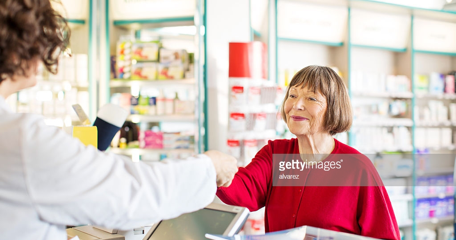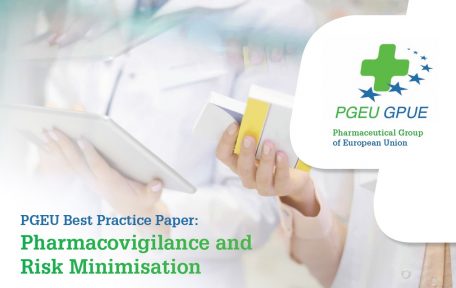-
1959
 Foundation
Foundation29th May 1959, 6 countries (Belgium, Germany, France, Italy, Luxembourg, and Netherlands) signed the agreement in Frankfurt, Germany.
Mr Verreydt was appointed as a secretary general and the name was decided in four languages:
o Groupement Pharmaceutique de la Communaute Europeennee
o Zusammenschluss der Apotheker der Europaischen Gemeinschaft
o Unione Farmaceutica della Communita Europea
o Groep van Apotekers van de Europese Gemeenschap -
1969
 White Paper on European Pharmacy
White Paper on European PharmacyFor its 10th anniversary, celebrated in Nice on 20-22 March 1969, the PGEU published the White Paper on European Pharmacy. The original text expanded on 7 main themes: training of pharmacists; pharmacy monopoly of medicines; geographical distribution of pharmacies; social security schemes ; pharmaceutical ethics; and pharmaceutical responsibility.
-
1980's
 Harmonisation of the training and education of pharmacists
Harmonisation of the training and education of pharmacistsThe highlight of this decade is the legislative process leading to the approval of Directives 85/432/EEC and 85/433/EEC harmonising the training and education of pharmacists and establishing the principle of the mutual recognition of pharmacy qualifications.
Following the work initiated in 1976, PGEU continued to underline the need for ensuring appropriate qualifications of pharmacists across the Community. Directive 85/433/EEC established a regime of automatic recognition of pharmacy qualifications, thus enabling the free movement of pharmacists throughout the EU.
-
1998
 First Website
First WebsitePGEU expanded its mission of ‘ensuring community pharmacists’ views are heard during the process of the harmonisation, at European level, of pharmaceutical and healthcare regulations’ to a wider one, focusing on ‘making a major contribution to improving public health’. At the end of this decade PGEU joined the virtual world with its own webpage.
-
2009
 50th Anniversary
50th AnniversaryPGEU celebrated its 50th Anniversary in the European Parliament on Tuesday 17th November. The anniversary was marked by an exhibition of posters from PGEU members, illustrating key events in pharmacy in their countries over the last 50 years.
During the celebrations, a message was delivered from 99-year-old Dr Ulisse Gallo, one of the founders of PGEU. The message was delivered by Dr Gallo’s daughter Barbara, also a pharmacist.
PGEU former President Mr Thony Björk said:
“The last 50 years have seen many changes in Europe, and our 50th Anniversary is an opportunity not only to reflect on what we have achieved in that time, but also on the new challenges and opportunities our profession will face in the next half century in developing its key role in promoting patient safety and better health outcomes.”
-
2012
 Best Pharmacy Initiatives of the Year
Best Pharmacy Initiatives of the YearRepresentatives from three European associations (EFPIA, GIRP and PGEU) received on the 12 March 2012 in Madrid, Spain, the awards for the “2011 Best Pharmacy Initiatives of the Year”. The awards were given out by the Spanish newspaper Correo Farmaceutico in recognition of the EFPIA/GIRP/PGEU ten core principles for their vision for a stakeholder-led European Medicines Verification Systems (“EMVS”).
EFPIA, GIRP and PGEU are jointly working on a European medicines’ verification project with the aim of preventing falsified medicines from entering the European supply chain and improve patient safety. More recently, EAEPC, the association representing parallel distributors, joined the project.
-
2017
 Best Practice Paper on Pharmacovigilance and Risk Minimisation
Best Practice Paper on Pharmacovigilance and Risk MinimisationOn the 26th September, the European Medicines Agency’s Pharmacovigilance Risk Assessment Committee (PRAC) held its first ever Public Hearing. At the Hearing PGEU presented an overview of the contribution community pharmacists make to reducing risk and ensuring the safe use of valproate for patients. Such Public Hearings are intended to give EU citizens a voice in medication safety evaluations and their introduction is as a direct result of the 2012 revisions to EU pharmacovigilance legislation, which this year celebrates its fifth anniversary.
On the same date, PGEU published its Best Practice Paper on Pharmacovigilance and Risk Minimisation highlighting the role community pharmacists play in ensuring the safe, rational and effective use of medicines across Europe. The paper provides an overview of the activities and services community pharmacists provide to ensure the highest level of patient safety, as well as several key recommendations.